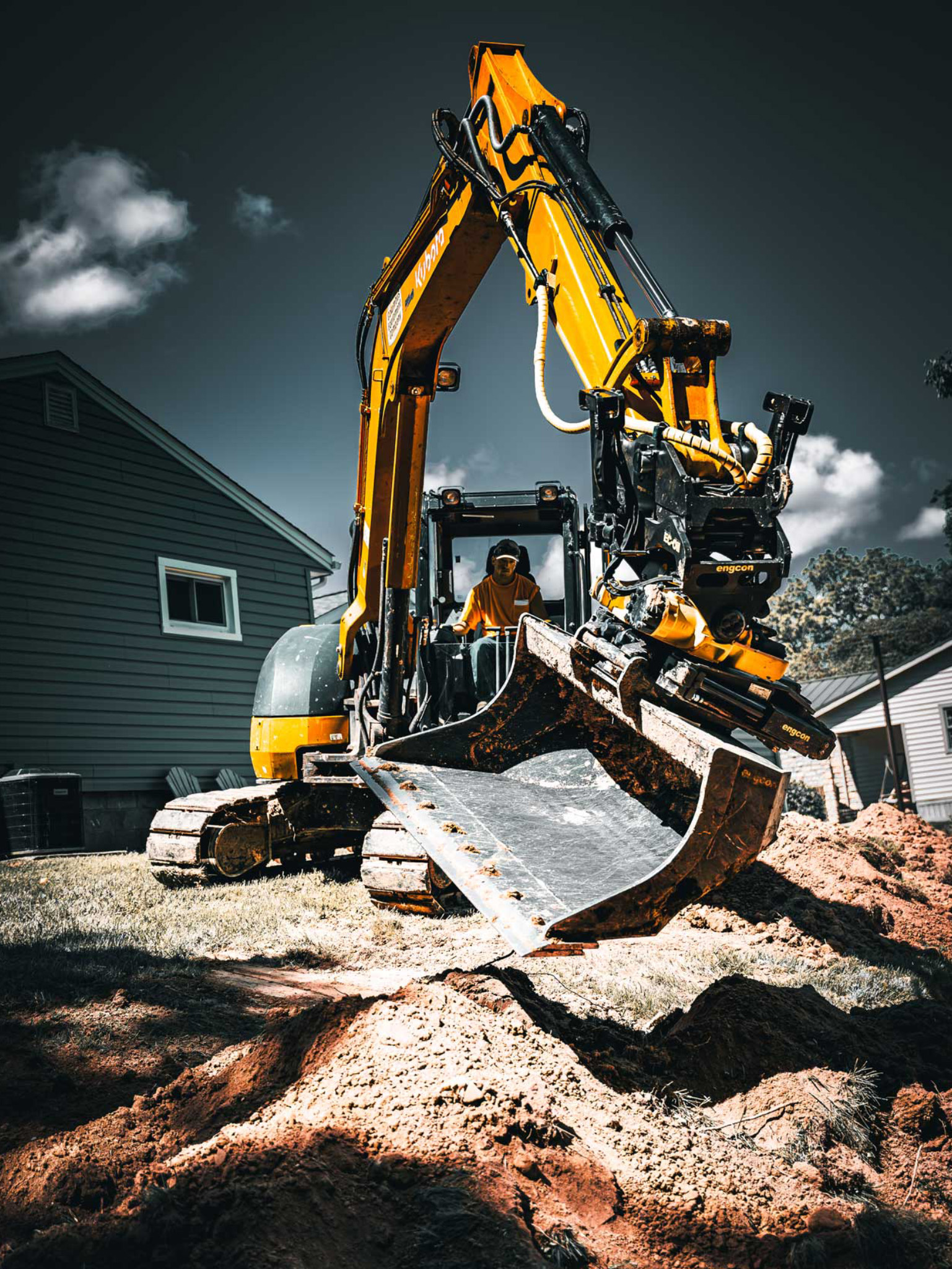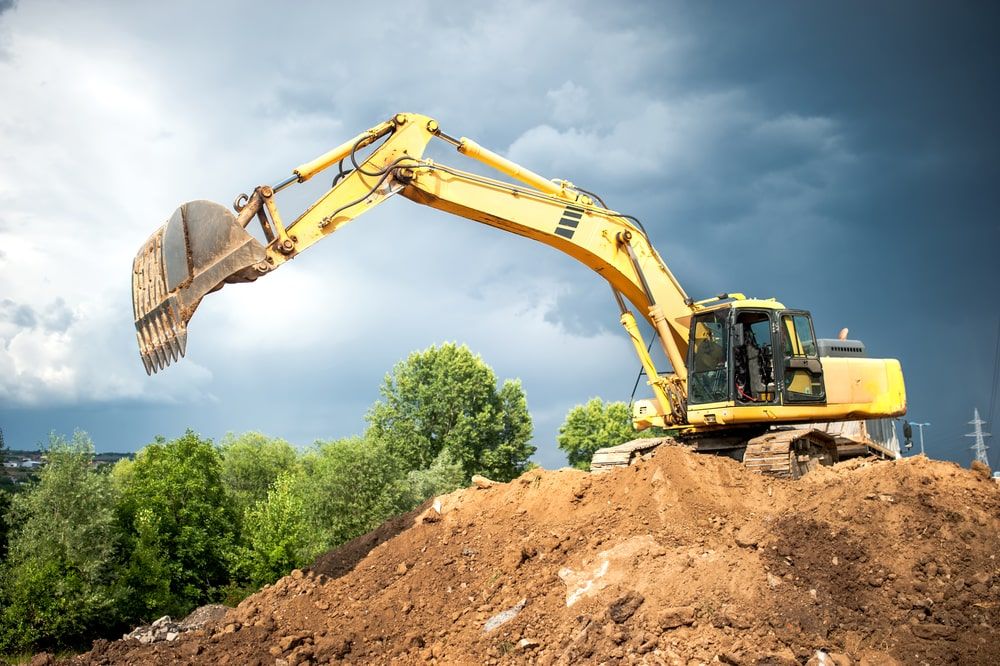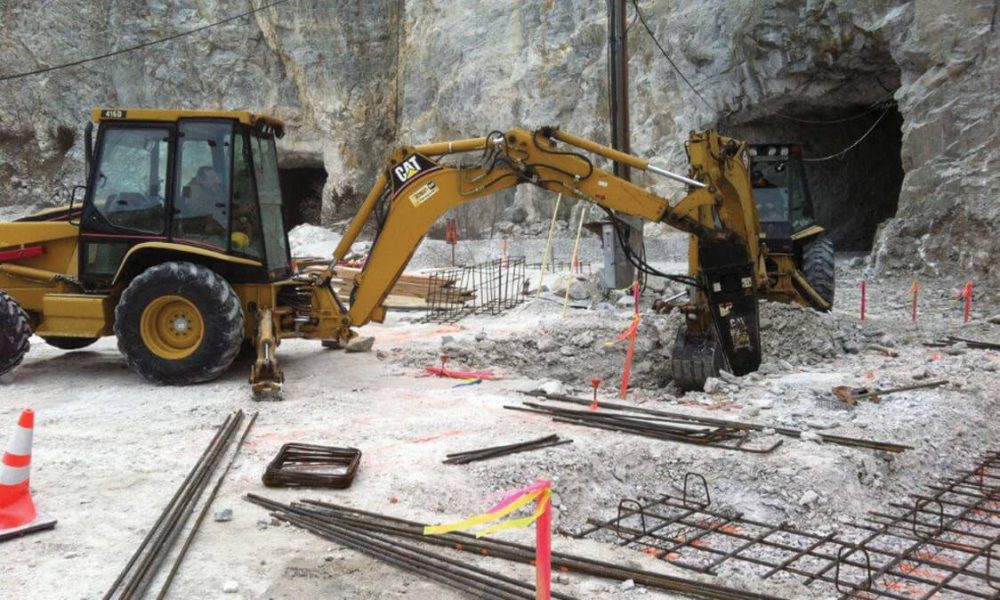Lancaster Trenching - Professional Trenching Solutions in Lancaster, Ohio
Lancaster Trenching - Professional Trenching Solutions in Lancaster, Ohio
Blog Article
Unveiling the Art of Excavation: Pro Tips for Safe and Efficient Excavating
As dirt is transformed and planet is relocated, the intricacies of excavation disclose themselves, requiring a keen understanding of equipment, dirt structure, safety protocols, and ecological considerations. The knowledge needed to browse these aspects effectively can indicate the difference between an effective excavation project and a potential catastrophe.
Significance of Correct Devices
To ensure the safety and security and effectiveness of any type of excavation job, using the suitable tools is vital. Excavation jobs differ in range and intricacy, varying from little residential landscaping jobs to large-scale building endeavors.
Excavators are basic pieces of machinery in any excavating procedure. These versatile machines come in various sizes to suit various project requirements. Mini excavators are suitable for smaller tasks, while larger excavators take on extra substantial tasks efficiently. Backhoes are one more essential equipment kind, incorporating the functions of a loader and an excavator in one machine. They are valuable for jobs calling for versatility and maneuverability.
Bulldozers excel in tasks that need pushing huge quantities of dirt or particles. By spending in the suitable tools, excavation projects can be finished securely, on time, and with precision.
Comprehending Soil Structure
A detailed grasp of dirt composition is essential for carrying out excavation tasks with precision and safety and security. Recognizing the different types of dirt is important as it directly impacts excavation methods, devices option, and total project effectiveness. Dirt make-up typically includes 4 major elements: sand, silt, clay, and organic issue. Each component has one-of-a-kind homes that influence exactly how soil responds to excavation procedures.
Silt fragments are smaller than sand however larger than clay, providing modest water drainage and cohesion. Organic issue, such as rotting plant material, impacts soil fertility and security.
Before commencing excavation, performing dirt examinations to identify its structure and attributes is important. This details aids in picking the ideal equipment, carrying out precaution, and establishing excavation methods customized to the details soil conditions - excavating ohio. By recognizing soil structure, excavation experts can boost job results while guaranteeing safety and security and adherence to finest techniques
Safety Measures and Protocols
Comprehending dirt composition is the cornerstone whereupon security actions and methods for excavation jobs are built, making certain the health of employees and the success of the endeavor. There are numerous vital measures that have to be executed to mitigate threats and protect against accidents. when it comes to safety during excavation.
First and leading, prior to any digging begins, an extensive inspection of the site need to be conducted to determine any type of potential hazards such as underground energies, unpredictable soil conditions, or neighboring frameworks that might posture a danger. It is essential to have a qualified individual look after the excavation procedure to guarantee that all safety and security protocols are followed strictly.
In addition, all employees involved in the excavation should be correctly learnt risk-free digging practices and the correct operation of equipment. Personal safety tools (PPE) such as construction hats, high presence clothing, handwear covers, and click here for info security boots ought to be put on in all times to decrease the threat of injuries. dump truck companies in ohio. Regular security meetings and tool kit talks need to additionally be performed to maintain all workers educated concerning possible hazards and reinforce secure job practices. By sticking to these security measures and procedures, excavation projects can be completed successfully and without event.
Reliable Excavation Preparation
When starting an excavation job, careful planning is necessary to make sure effectiveness, safety and security, and effective results. Effective excavation preparation involves several key steps that are important for the smooth implementation of the job. The initial step is to perform a comprehensive website assessment to identify any kind of potential dangers, such as underground energies or unstable dirt problems. This details is important for creating a thorough excavation strategy that consists of precaution and risk mitigation techniques.
Once the website assessment is total, the next action is to produce a clear timeline and routine for the excavation activities. This consists of establishing the series of jobs, tools demands, and workforce allowance. Correct scheduling helps stay clear of hold-ups and makes certain that the job remains on track.

Additionally, communication among all staff member is extremely important throughout the preparation stage. Clear instructions, regular updates, and efficient coordination are crucial for a successful excavation task. By investing time and effort in meticulous preparation, excavation groups can significantly enhance productivity, minimize risks, and attain successful outcomes.

Taking Care Of Environmental Factors To Consider
With raising focus on environmental sustainability in building and construction practices, managing environmental considerations has actually become an essential aspect of excavation projects. Excavation tasks helpful resources have the potential to influence the surrounding atmosphere via soil disintegration, sediment drainage, environment disruption, and contamination of water resources. To alleviate these dangers, it is important to apply ideal practices that prioritize ecological defense.

Moreover, proper waste monitoring is crucial to avoid soil and water contamination. Executing procedures for the disposal of harmful products, recycling of waste products, and decreasing making use of damaging chemicals can significantly decrease the ecological effect of excavation tasks. By incorporating these techniques into excavation preparation and execution, building and construction firms can guarantee that their projects are not only safe and effective however likewise eco accountable.
Final Thought
In conclusion, mastering the art of excavation calls for a complete understanding of proper devices, soil make-up, precaution, and efficient preparation. By following these standards and considering ecological aspects, excavations can be conducted securely and effectively. It is crucial to prioritize safety and security and efficiency in every digging task to ensure effective outcomes.
As soil is turned and earth is moved, the complexities of excavation expose themselves, requiring a keen understanding of tools, dirt structure, safety and security protocols, and environmental factors to consider.To make sure the security and efficiency of any excavation task, making use of the proper equipment is critical.A comprehensive grasp of soil composition is essential for executing excavation projects with accuracy and original site security. Understanding the various kinds of dirt is vital as it directly influences excavation techniques, equipment selection, and total project effectiveness. By understanding soil structure, excavation experts can enhance job results while guaranteeing safety and security and adherence to finest methods.
Report this page